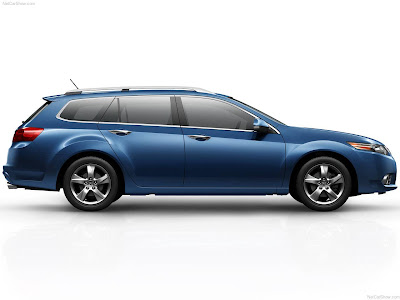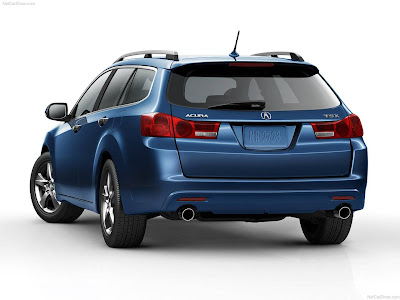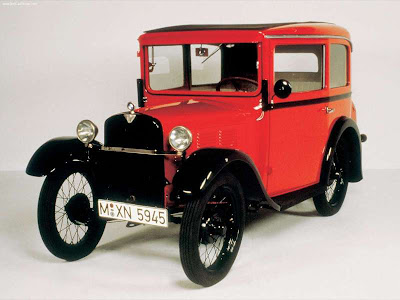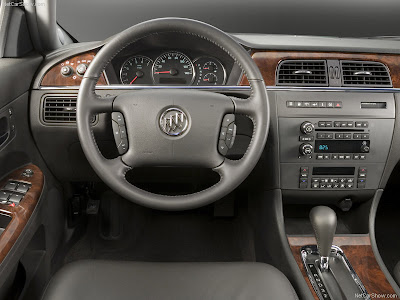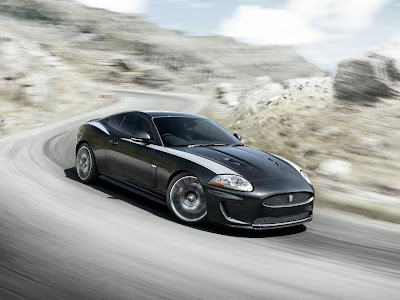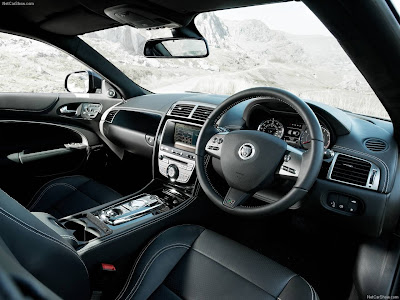








To mark its 80th anniversary, Pininfarina proposes an "open" Alfa Romeo 2uettottanta Concept that is exciting and a delight to drive. For those who still like to dream in a car. For those looking for a mixture of vanity, entertainment, and the pleasure of life in the open air. For those who love icons as the greatest expression of the age we live in. For those who want their cars to be an uncommon sensory experience in terms of both style and driving, without being obsessed by performance. For those who want to be excited by a dynamic, sporty car that transmits the exclusiveness and refinement typical of an Alfa Romeo spider designed by Pininfarina.
2uettottanta: a name that evokes the legendary Duetto, but also the years of activity at Pininfarina, which launches the celebrations for its 80th anniversary with this concept car. And it has decided to do so with a type of car that is by definition, the work of Pininfarina: an Alfa Romeo spider. A very Italian product, which has become an export brand, representing the inexhaustible talent that the whole world associates with Italy.
The Alfa Romeo 2uettottanta Concept reflects Pininfarina's determination to look to the future with optimism following tradition, restating its excellence in design and its acknowledged capacity for aesthetic and technological innovation. It is a concept that represents an innovative approach, projected into the third millennium, to a topic that is firmly rooted in Pininfarina history, the 2-seater spider. And like the best Alfa Romeo sports cars to come from Pininfarina's pencil, the Alfa Romeo 2uettottanta Concept exalts the driving experience and concentrates on the excitement of being at the wheel of an open car with a great aesthetic personality. It is a car that can make people dream and excites even after many years. The icon of a lifestyle that harks back to a lively, tumultuous period. Like the Duetto of the Sixties, which helped to establish a trend based on the themes of rebellion and escape, thanks to the film "The Graduate".
Alfa Romeo 2uettottanta Concept
The Alfa Romeo 2uettottanta Concept is also a tribute to Alfa Romeo, which celebrates its centenary in 2010: the alliance between Alfa Romeo and Pininfarina is one of the most significant and durable in the history of the car, one of men and of passion, of design and cutting-edge technical solutions, which has generated an inestimable number of good-looking, innovative cars with plenty of temperament. With a predilection for sports cars and convertibles. The aim is to replicate all this with the Alfa Romeo 2uettottanta Concept. So a clean, elegant line was chosen for this "simple 2-seater", which is proposed with a 1750 cc turbo engine positioned longitudinally, an obvious reference to the "1750 Veloce" of 1968, one of the many versions derived from the famous "Osso di Seppia" (Cuttlefish). With its red bodywork, inspired by the typical Alfa Romeo paintwork, the 2uettottanta is 1797 mm wide, 4212.6 mm long, 1280 mm high and has a wheelbase of 2500 mm.
The pleasure of driving and feeling in harmony with nature is transformed into light, sleek, refined volumes, and shapes that seem to slip through the air easily. This generates the theme of this concept: the expression of a single volume, which is some way from the ground and suspended. The Alfa Romeo 2uettottanta Concept almost seems to lift up from the ground "going further". It is an optical effect achieved thanks to a line that crosses the whole car horizontally. An uninterrupted sign applied to dynamic, sporty proportions - typical of Alfa Romeo spiders - accentuated by the configuration of the passenger compartment, which is shifted significantly to the rear. The force of the design lies in its exaltation of simplicity, which does not need to show its muscles but concentrates purely on agility and harmony.
The front end of the Alfa Romeo 2uettottanta Concept underlines its true Alfa Romeo character. The design is simple, with a central line that runs smoothly along the nose of the car, while the execution of the surfaces is more sophisticated. At the centre, in full view, and anything but a purely decorative element, is the Alfa Romeo shield, which seems to emerge from the heart of the car and to stretch outwards, in Pininfarina's futuristic, three-dimensional approach. The shield is made of aluminium and incorporates floating horizontal flaps. On either side are the two triangular lateral air intakes. The two elements impressed on the imposing bonnet create a natural link between the logo and the large windscreen, which has been designed as a ring in hand-beaten aluminium that emerges from the body of the car without interrupting its flow. The front headlights, which adopt the latest LED technologies, are embedded under the line that gives the whole car its character. A strip of carbon in the lower part of the front acts as an air splitter, channelling the air to the rear end of the car.
The side view of the car, where the theme of the single volume is repeated, highlights the flowing line of the whole, with the shapes merging naturally. The horizontal line "cut" into the sides gives a sense of great dynamism; it starts from the front wheelarch and extends back to the rear wheel. Like an athlete, for a car, being slim also means achieving aerodynamic efficiency. Pininfarina has always strived for natural shapes that can convey efficiency and respect of the environment, an approach confirmed by its great commitment to the theme of eco-sustainable mobility. The Alfa Romeo 2uettottanta Concept is in perfect harmony with nature, becoming the formal expression of a response to the needs of our day: it is an arrow that flies through the wind almost without encountering resistance.
Smooth, essential, soft surfaces even at the rear, which echoes the front, albeit with slightly more emphasis on the muscles. The design combines stylistic simplicity with a strong character in the volumes and proportions, with details designed to underline the car's dynamic, light personality. The two bumps seem to emerge from the volume, becoming floating wings that create the roll-over bars behind the seats. At either end, these bars generate an appendix designed to hold the seat belts. Even at the rear the light clusters are slender and embedded under the line that defines the whole section.
Great attention went into the design of the interior. The result is a spacious, comfortable passenger compartment, conceived with light, dynamic volumes, which envelop the occupants in a strong, reassuring embrace. The shapes are sewn into the leather, incorporating the touch controls: in its functions, the Alfa Romeo 2uettottanta Concept is faithful to its vocation as a car designed to be a delight to drive. The facia extends fluidly to the sides merging into the doorway as the natural continuation of the volume of the car, thus creating a perfect symbiosis between exterior and interior. The dashboard has a driver-oriented configuration with an innovative approach to the classical circular Alfa Romeo "tubes" that contain the instruments. The tunnel contains the Alfa DNA gear selector in an ergonomic position; this varies the set-up of the car in three modes, Dynamic, Normal and All Weather, adapting the behaviour of the various systems on the vehicle (engine, transmission, suspension, steering, brakes, etc.) to the demands of the driver and the different driving conditions. The tunnel runs through the passenger compartment and it gives structure to the chassis, revealing the carbon elements: the choice of this material reflects Pininfarina's constant research into alternative materials that can make vehicles lighter, reducing consumption and emissions. Another strong element of the interior is the steering wheel, which is a modern interpretation of the Duetto's perforated three-spoke wheel, with the addition of a shift paddle for sequential control of the dual-clutch gearbox. An enjoyable drive and comfort are also guaranteed by the anatomical sporty seats. All the interior of the car "floats": the ventilation ducts are positioned between the passenger compartment and the hull.
The size and design of the tyres, which were created specifically for the Alfa Romeo 2uettottanta Concept in collaboration with Dunlop, accentuate the impression of strong character and force given by the car. The tyres are of the low profile type, right on the extreme edges of the plane view: designed by Pininfarina to incorporate the innovative technologies developed by Dunlop, their graphics reflect those of the car. Their aerodynamic shape and very smooth lateral profile, guarantee better roadholding and less resistance to air, thus reducing consumption. The rims are treated in aluminium in harmony with the rest of the car, and are a free interpretation of the classic five-circle Alfa Romeo pattern, revealing the high performance carbo-ceramic Alfa Romeo brakes by Brembo.
The Alfa Romeo 2uettottanta Concept is not a pure styling exercise, but also a project and research: the goal is to grasp the spirit of the spider in the configuration, the proportions and the conception of the car as well as in its stylistic imprint. This working method is part of Pininfarina's genes. For this project, the Pininfarina creative team were given carte blanche to express the values inherent in the Alfa spider "by Pininfarina", the values that are deemed to have made the Giulietta Spider or the Duetto all-time classics. To achieve this result, the car was given a particular set-up, with a low centre of gravity and a passenger compartment that is very exposed so as not to isolate the occupants from the surrounding environment. The result is to bring the road "nearer" to the eyes of the driver and to increase the sense of dynamism even at low speed.
What is the 2uettottanta effect? Desire. Whoever sees it "must" possess it, drive it, enjoy it. Because the 2uettottanta is not an unattainable dream. Nor does the 2uettottanta only want to impress at first glance, but to achieve a beauty that does not strive solely for immediate confirmation, but gradually reveals all its values and transfers them to the future, making the style eternal. As it did in the case of the Duetto, which continues to be celebrated as an icon of design after more than 40 years.
2uettottanta: a name that evokes the legendary Duetto, but also the years of activity at Pininfarina, which launches the celebrations for its 80th anniversary with this concept car. And it has decided to do so with a type of car that is by definition, the work of Pininfarina: an Alfa Romeo spider. A very Italian product, which has become an export brand, representing the inexhaustible talent that the whole world associates with Italy.
The Alfa Romeo 2uettottanta Concept reflects Pininfarina's determination to look to the future with optimism following tradition, restating its excellence in design and its acknowledged capacity for aesthetic and technological innovation. It is a concept that represents an innovative approach, projected into the third millennium, to a topic that is firmly rooted in Pininfarina history, the 2-seater spider. And like the best Alfa Romeo sports cars to come from Pininfarina's pencil, the Alfa Romeo 2uettottanta Concept exalts the driving experience and concentrates on the excitement of being at the wheel of an open car with a great aesthetic personality. It is a car that can make people dream and excites even after many years. The icon of a lifestyle that harks back to a lively, tumultuous period. Like the Duetto of the Sixties, which helped to establish a trend based on the themes of rebellion and escape, thanks to the film "The Graduate".
Alfa Romeo 2uettottanta Concept
The Alfa Romeo 2uettottanta Concept is also a tribute to Alfa Romeo, which celebrates its centenary in 2010: the alliance between Alfa Romeo and Pininfarina is one of the most significant and durable in the history of the car, one of men and of passion, of design and cutting-edge technical solutions, which has generated an inestimable number of good-looking, innovative cars with plenty of temperament. With a predilection for sports cars and convertibles. The aim is to replicate all this with the Alfa Romeo 2uettottanta Concept. So a clean, elegant line was chosen for this "simple 2-seater", which is proposed with a 1750 cc turbo engine positioned longitudinally, an obvious reference to the "1750 Veloce" of 1968, one of the many versions derived from the famous "Osso di Seppia" (Cuttlefish). With its red bodywork, inspired by the typical Alfa Romeo paintwork, the 2uettottanta is 1797 mm wide, 4212.6 mm long, 1280 mm high and has a wheelbase of 2500 mm.
The pleasure of driving and feeling in harmony with nature is transformed into light, sleek, refined volumes, and shapes that seem to slip through the air easily. This generates the theme of this concept: the expression of a single volume, which is some way from the ground and suspended. The Alfa Romeo 2uettottanta Concept almost seems to lift up from the ground "going further". It is an optical effect achieved thanks to a line that crosses the whole car horizontally. An uninterrupted sign applied to dynamic, sporty proportions - typical of Alfa Romeo spiders - accentuated by the configuration of the passenger compartment, which is shifted significantly to the rear. The force of the design lies in its exaltation of simplicity, which does not need to show its muscles but concentrates purely on agility and harmony.
The front end of the Alfa Romeo 2uettottanta Concept underlines its true Alfa Romeo character. The design is simple, with a central line that runs smoothly along the nose of the car, while the execution of the surfaces is more sophisticated. At the centre, in full view, and anything but a purely decorative element, is the Alfa Romeo shield, which seems to emerge from the heart of the car and to stretch outwards, in Pininfarina's futuristic, three-dimensional approach. The shield is made of aluminium and incorporates floating horizontal flaps. On either side are the two triangular lateral air intakes. The two elements impressed on the imposing bonnet create a natural link between the logo and the large windscreen, which has been designed as a ring in hand-beaten aluminium that emerges from the body of the car without interrupting its flow. The front headlights, which adopt the latest LED technologies, are embedded under the line that gives the whole car its character. A strip of carbon in the lower part of the front acts as an air splitter, channelling the air to the rear end of the car.
The side view of the car, where the theme of the single volume is repeated, highlights the flowing line of the whole, with the shapes merging naturally. The horizontal line "cut" into the sides gives a sense of great dynamism; it starts from the front wheelarch and extends back to the rear wheel. Like an athlete, for a car, being slim also means achieving aerodynamic efficiency. Pininfarina has always strived for natural shapes that can convey efficiency and respect of the environment, an approach confirmed by its great commitment to the theme of eco-sustainable mobility. The Alfa Romeo 2uettottanta Concept is in perfect harmony with nature, becoming the formal expression of a response to the needs of our day: it is an arrow that flies through the wind almost without encountering resistance.
Smooth, essential, soft surfaces even at the rear, which echoes the front, albeit with slightly more emphasis on the muscles. The design combines stylistic simplicity with a strong character in the volumes and proportions, with details designed to underline the car's dynamic, light personality. The two bumps seem to emerge from the volume, becoming floating wings that create the roll-over bars behind the seats. At either end, these bars generate an appendix designed to hold the seat belts. Even at the rear the light clusters are slender and embedded under the line that defines the whole section.
Great attention went into the design of the interior. The result is a spacious, comfortable passenger compartment, conceived with light, dynamic volumes, which envelop the occupants in a strong, reassuring embrace. The shapes are sewn into the leather, incorporating the touch controls: in its functions, the Alfa Romeo 2uettottanta Concept is faithful to its vocation as a car designed to be a delight to drive. The facia extends fluidly to the sides merging into the doorway as the natural continuation of the volume of the car, thus creating a perfect symbiosis between exterior and interior. The dashboard has a driver-oriented configuration with an innovative approach to the classical circular Alfa Romeo "tubes" that contain the instruments. The tunnel contains the Alfa DNA gear selector in an ergonomic position; this varies the set-up of the car in three modes, Dynamic, Normal and All Weather, adapting the behaviour of the various systems on the vehicle (engine, transmission, suspension, steering, brakes, etc.) to the demands of the driver and the different driving conditions. The tunnel runs through the passenger compartment and it gives structure to the chassis, revealing the carbon elements: the choice of this material reflects Pininfarina's constant research into alternative materials that can make vehicles lighter, reducing consumption and emissions. Another strong element of the interior is the steering wheel, which is a modern interpretation of the Duetto's perforated three-spoke wheel, with the addition of a shift paddle for sequential control of the dual-clutch gearbox. An enjoyable drive and comfort are also guaranteed by the anatomical sporty seats. All the interior of the car "floats": the ventilation ducts are positioned between the passenger compartment and the hull.
The size and design of the tyres, which were created specifically for the Alfa Romeo 2uettottanta Concept in collaboration with Dunlop, accentuate the impression of strong character and force given by the car. The tyres are of the low profile type, right on the extreme edges of the plane view: designed by Pininfarina to incorporate the innovative technologies developed by Dunlop, their graphics reflect those of the car. Their aerodynamic shape and very smooth lateral profile, guarantee better roadholding and less resistance to air, thus reducing consumption. The rims are treated in aluminium in harmony with the rest of the car, and are a free interpretation of the classic five-circle Alfa Romeo pattern, revealing the high performance carbo-ceramic Alfa Romeo brakes by Brembo.
The Alfa Romeo 2uettottanta Concept is not a pure styling exercise, but also a project and research: the goal is to grasp the spirit of the spider in the configuration, the proportions and the conception of the car as well as in its stylistic imprint. This working method is part of Pininfarina's genes. For this project, the Pininfarina creative team were given carte blanche to express the values inherent in the Alfa spider "by Pininfarina", the values that are deemed to have made the Giulietta Spider or the Duetto all-time classics. To achieve this result, the car was given a particular set-up, with a low centre of gravity and a passenger compartment that is very exposed so as not to isolate the occupants from the surrounding environment. The result is to bring the road "nearer" to the eyes of the driver and to increase the sense of dynamism even at low speed.
What is the 2uettottanta effect? Desire. Whoever sees it "must" possess it, drive it, enjoy it. Because the 2uettottanta is not an unattainable dream. Nor does the 2uettottanta only want to impress at first glance, but to achieve a beauty that does not strive solely for immediate confirmation, but gradually reveals all its values and transfers them to the future, making the style eternal. As it did in the case of the Duetto, which continues to be celebrated as an icon of design after more than 40 years.

